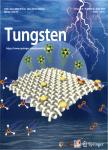Synthesis of cobalt, palladium, and rhenium nanoparticles
作者机构:Department of Materials Science and EngineeringUniversity of Texas at ArlingtonArlingtonTX 76019USA
出 版 物:《Tungsten》 (钨科技(英文))
年 卷 期:2020年第2卷第3期
页 面:261-288页
核心收录:
学科分类:0817[工学-化学工程与技术] 0806[工学-冶金工程] 08[工学] 0805[工学-材料科学与工程(可授工学、理学学位)] 080502[工学-材料学] 0703[理学-化学] 0702[理学-物理学]
基 金:This work was financially supported by National Institutes of Health(NIH)(Grant No.R15CA199019) Cancer Prevention Research Institute of Texas(CPRIT)(Grant No.PR190678)
主 题:Nanotechnology Co nanoparticle Pd nanoparticle Re nanoparticle Nanoparticle synthesis
摘 要:Over the past decade,metal nanoparticles(MNPs)have attracted extensive attention due to their unique physiochemical properties that make them highly applicable in various fields such as chemical sensing,energy storage,catalysis,medicine,and environmental *** physiochemical properties depend drastically on the MNP size and morphology,which are largely determined by their synthesis *** on MNPs predominantly focused on coinage metals(Au,Ag and Cu),but in the last decade research on metals with a relatively high melting temperature such as Pd,Co,and Re has seen rapid increases,mainly driven by their potential applications as *** paper presents the recent advances on different synthesis techniques of Co,Pd,and Re nanoparticles,their resulting nanostructures,as well as existing and potential applications.



